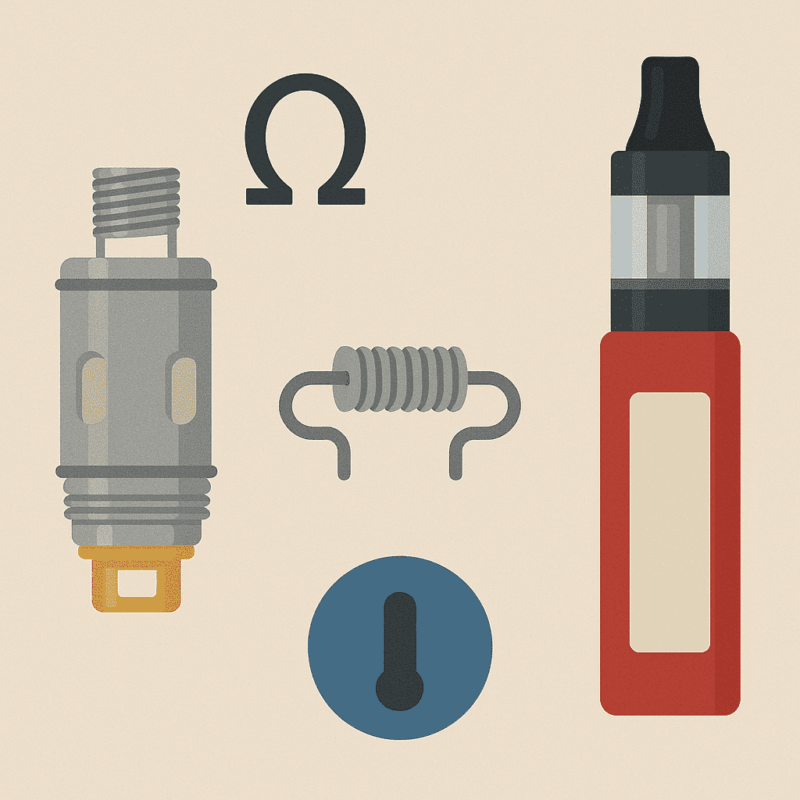Understanding what ohms mean in relation to coils is important for anyone using a vape. The ohm rating determines how much current passes through the coil’s wire and thereby affects heat generation, the amount of vapor and the flavour experience. Although it may seem technical at first glance, it is a topic that can be explained step by step. By understanding the basics it becomes easier to choose the right coil and adjust your equipment safely.
What does “ohm” mean in a coil?
Ohm is a unit of electrical resistance. With respect to coils, it describes how much resistance the wire in the coil provides against the electrical current that the battery supplies. A coil with low ohm rating has little resistance, which means more current flows and the heating develops faster. A coil with high ohm rating gives greater resistance, which means the current is reduced and the heating becomes lower.
How the resistance affects performance and vapor production
The resistance in the coil affects both vapor production and flavour. Low ohm is often used for direct-to-lung vaping, because it produces more vapor and gives a warmer vape. High ohm is used more often for mouth-to-lung vaping, which yields less vapor but can give clearer flavour and a milder draw. The choice of ohm is therefore both about personal preference and which type of vape equipment is used.
Differences between low ohm and high ohm
A coil of, for example, 0.2–0.5 ohm is counted as a sub-ohm coil. These are used with higher power and suit those who want lots of vapor. The downside can be that the battery drains faster and that e-liquid consumption increases. A coil over 1 ohm works better for someone who wants a discreet vape with lower power. These coils consume less e-liquid and make the battery last longer, which can be good for simpler pod systems or for someone who prefers a more traditional draw.
Factors that determine a coil’s ohm rating
Which ohm rating a coil ends up with depends on several factors. The material of the wire plays a role — for example Kanthal, stainless steel and nickel have different properties. Also the thickness of the wire influences — a thinner wire gives higher resistance than a thicker wire. The length of the wire is also an important factor; the longer the wire, the more resistance. Lastly the number of wraps matters, since more turns of the wire increase the resistance. The combination of these factors determines the coil’s final ohm rating.
Example of how to calculate ohms in practice
For someone who wants to build their own coils it can be useful to know Ohm’s law. The basic formula is V = I × R, where V is the voltage, I is the current and R is the resistance. By knowing the battery’s voltage and what current is used you can calculate what resistance the coil will have. In practice, many vapers however use an ohm-meter or a mod with an inbuilt display to directly see the coil’s resistance. It is a simple way to ensure that the equipment is used within safe limits.

